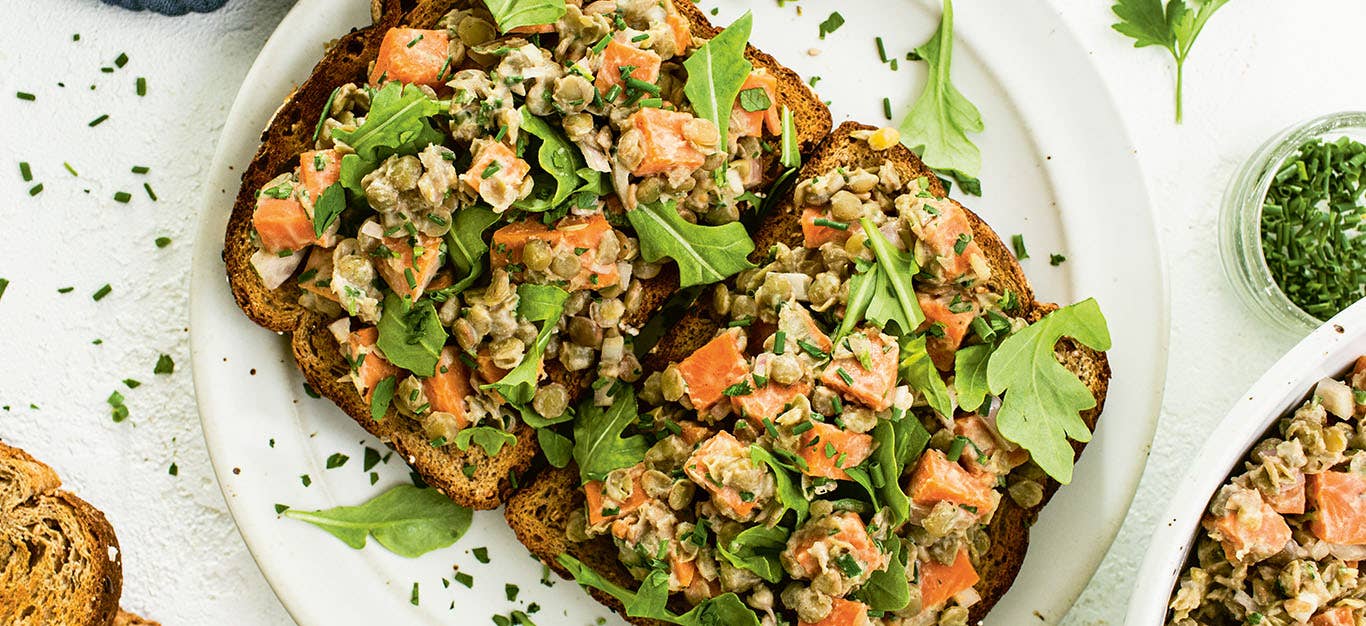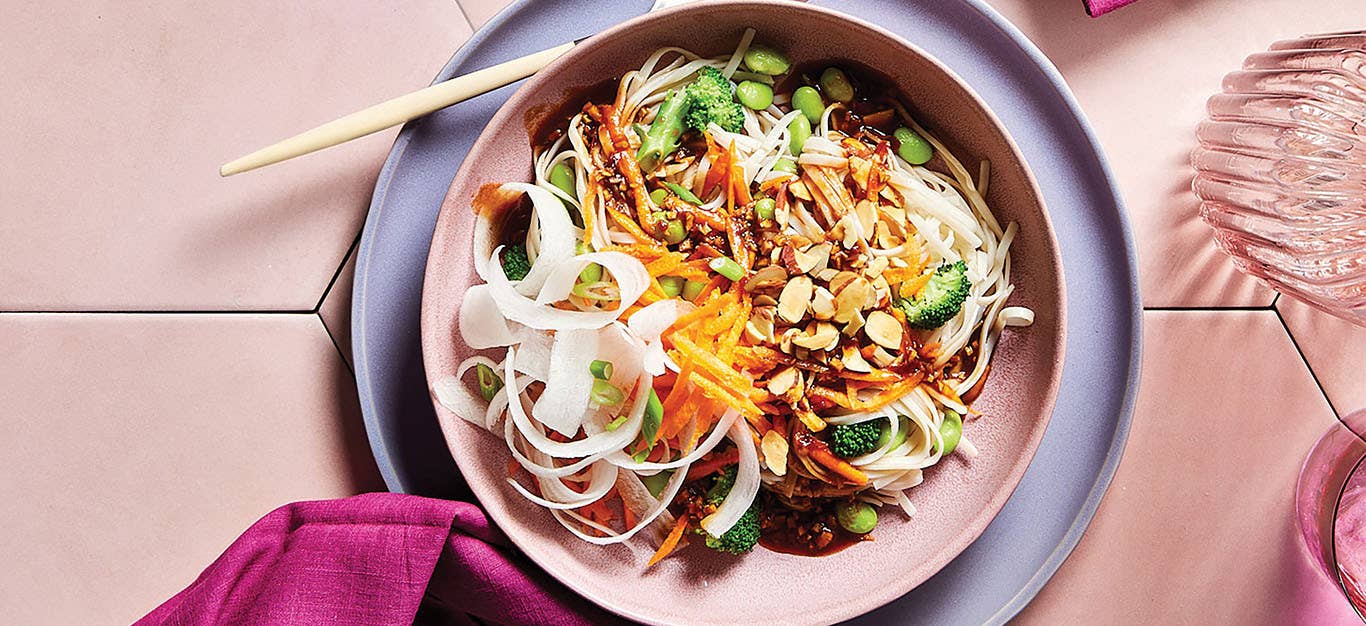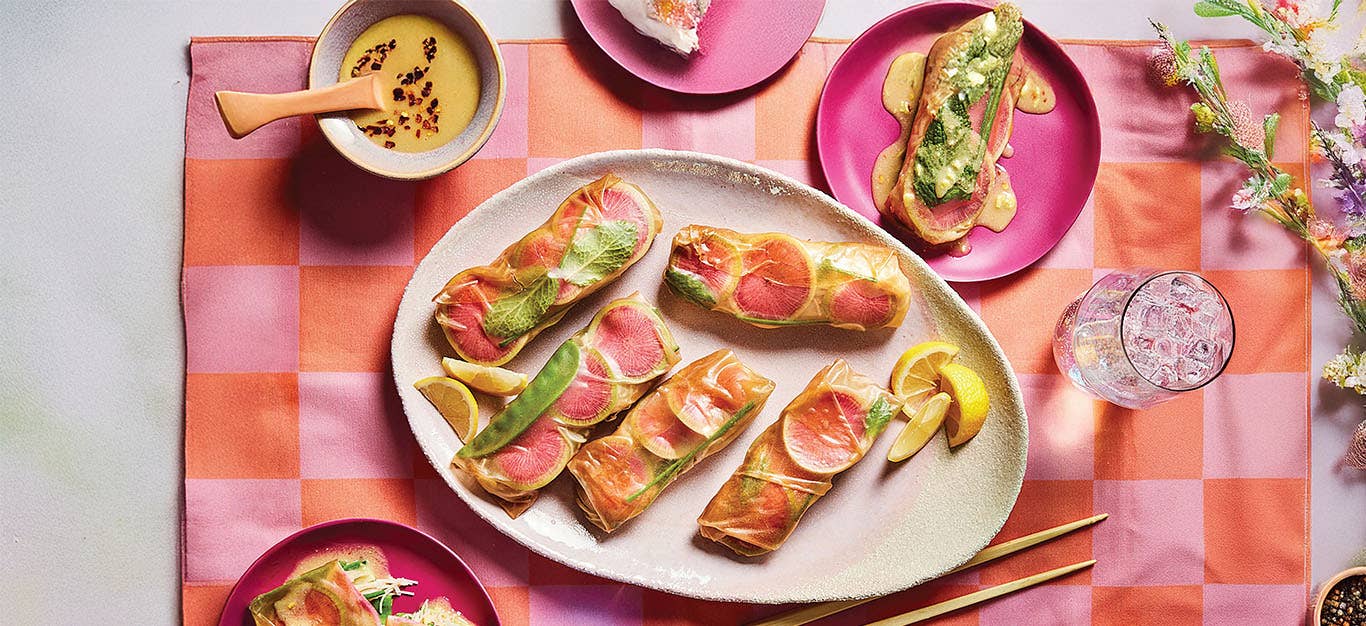- Prep-time: / Ready In:
- Makes about 7 cups
- Serving size: ¼ of recipe
- Print/save recipe
This quick and flavorful dish can be made quicker still by using frozen veggies in place of fresh. Instead of chow mein or lo mein noodles, which are traditionally made with processed wheat flour and egg, use whole wheat spaghetti or any other long whole grain noodles.

Ingredients
- 8 ounces dry whole grain spaghetti
- 3 tablespoons arrowroot powder
- ¼ cup low-sodium soy sauce or tamari
- 2 tablespoons brown rice vinegar
- 1½ tablespoons grated fresh ginger
- 9 small garlic cloves minced (about 1½ tablespoons)
- 7 to 8 scallions, white and green parts, thinly sliced diagonally into 1-inch-long strips (about 2 cups)
- 8 ounces button mushrooms, trimmed and sliced (about 3 cups)
- 1 large carrot, thinly sliced (about 1 cup)
- 1½ cups broccoli florets in ½-inch pieces (about 5 ounces)
- 2 baby bok choy, trimmed and cut into 1-inch pieces (about 3 cups)
- 2 tablespoons finely chopped fresh cilantro
- 2 tablespoons cashews, toasted and chopped (optional)
Instructions
- Bring a large pot of water to a boil. Cook the noodles according to the package instructions. Drain, rinse with cold water if necessary, and drain again.
- Meanwhile, in a medium bowl, mix the arrowroot powder, soy sauce, vinegar, and 1½ cups water until smooth. Set the slurry aside.
- In a large sauté pan, place the ginger, garlic, scallions, mushrooms, carrots, and ¼ cup water. Cover and cook over medium heat until the vegetables are halfway cooked, about 5 minutes.
- Add the broccoli and bok choy to the vegetables. Stir the reserved slurry and add it to the pan. Cover and cook until all the vegetables are crisp-tender and the sauce is slightly thickened, about 5 minutes.
- Add the noodles to the vegetables; toss until well combined. Heat over medium-low if necessary to warm all the ingredients and add a little water to loosen the sauce, if necessary. Garnish with cilantro and cashews (if using) and serve hot.
Per serving (¼ of recipe): 200 calories, 34.8 g carbohydrates, 10.6 g protein, 3 g total fat, 0.5 g saturated fat, 0 g cholesterol, 320 mg sodium, 4.5 g fiber, 4.7 g sugar
Note: Nutritional information is provided as an estimate only.




Comments (9)
(4 from 3 votes)Why so much water? I would leave out most or all of it and the arrowroot.
I believe that is used to thicken the sauce. Arrowroot can get quite thick, quite fast, so the water (I add about 1/2 of the water and then add more to thin the sauce out to the consistency I want) is there to give consistency. Otherwise, it would look more like a paste or glue :)
I won't make this again, it didn't taste like much of anything. My kids, who took it in their lunches to school didn't eat it, came home with almost all of the food and were starving. I won't make it again.
It’s a really easy recipe, but I think the best take away is the sauce. You can play around with it. I reduced the water and used 1 tsp of dry ginger and garlic as a sub and it makes a knock-off Hoisin. Fav is subbing dry ginger and garlic, reducing soy to 2 tbsp, and then adding 2 tsp of Dijon, 1 tsp of sriracha, then adjust water for viscosity.
This was perfect! I used clear gel in place of arrowroot powder and liquid amino’s in place of the soy sauce. Added curved tofu, mushrooms, radishes, onions, Napa cabbage and topped it with a few cashews. Thank you
I like the simplicity of the flavors its a good base to build upon. I added sriracha and and a tablespoon of crunchy peanutbutter but you can add anything to your liking.
I used this recipe for weekly meal planning. It made five 2-cup servings. It was very colorful & has a very good flavor (not too much garlic or ginger). It is one of my new favorites. I plan to freeze some to see how it tastes later reheated.
Recipe is fine but nothing about this is actually Chinese. No Chinese exclusive ingredients or even inspired by anything. Just call it ginger and garlic noodles and take out the word Chinese.
Yay! You win. Do you loose your cool on 'jumbo shrimp' also?